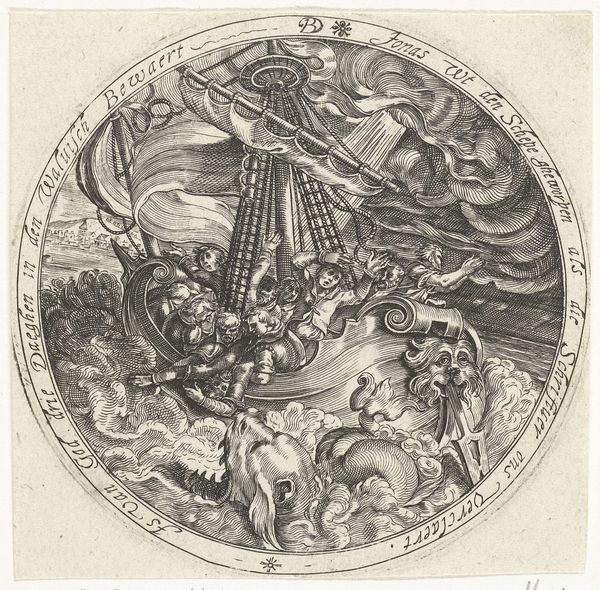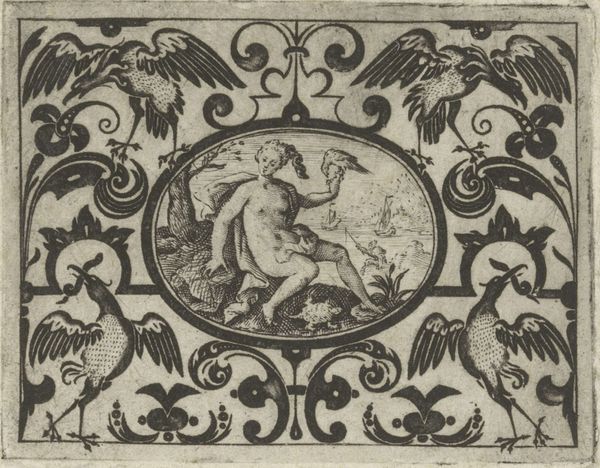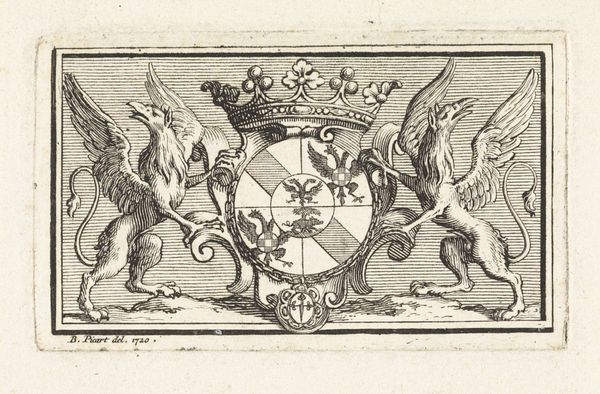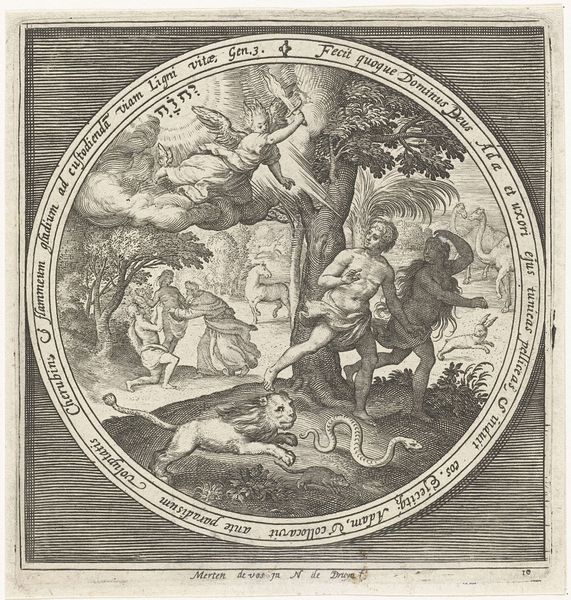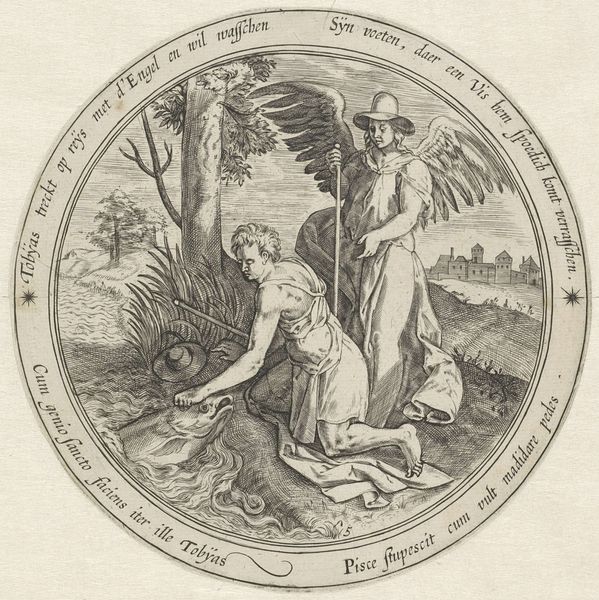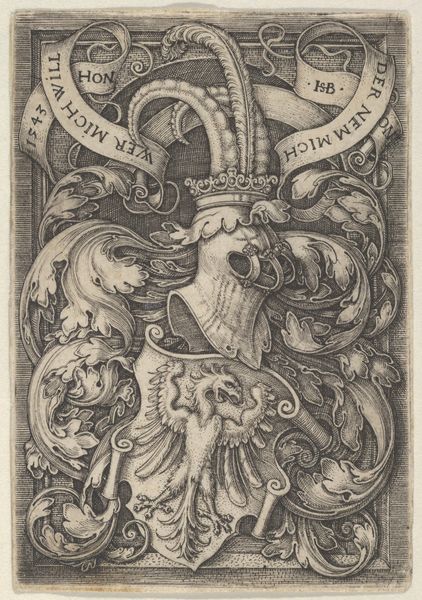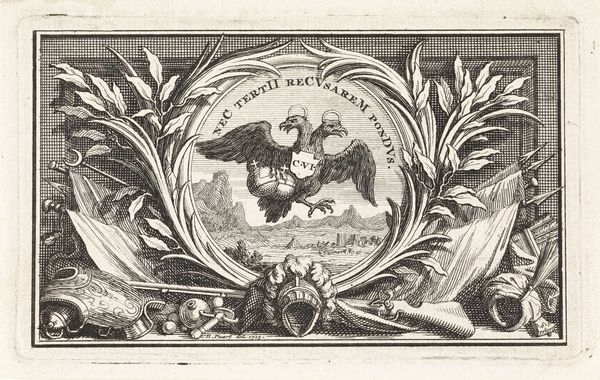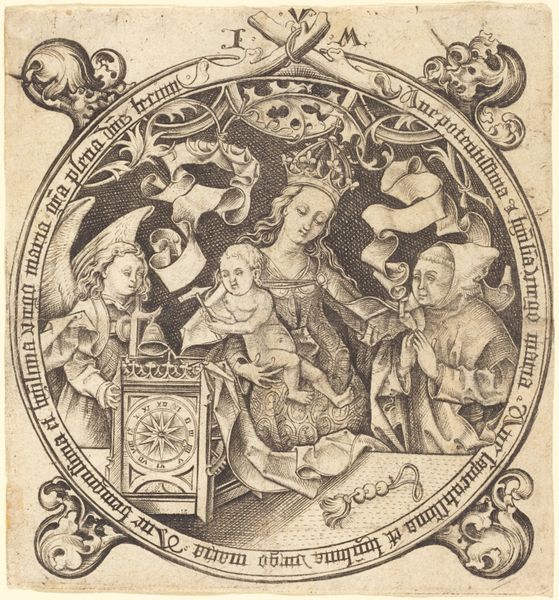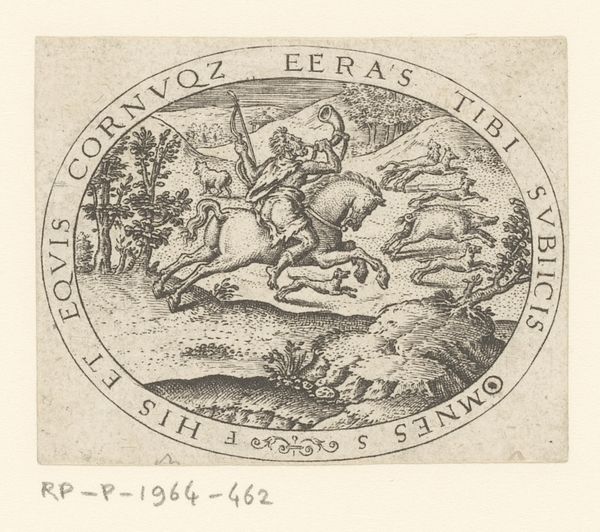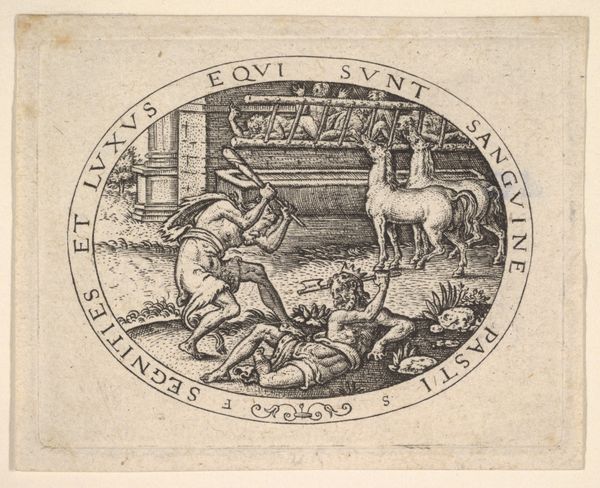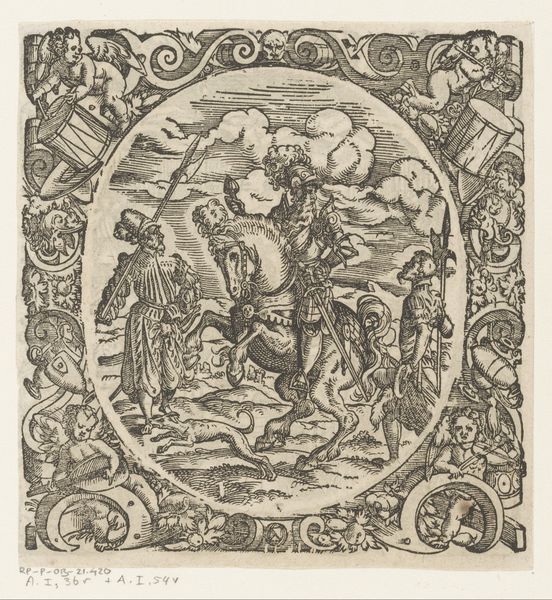
Dimensions: height 69 mm, width 89 mm
Copyright: Rijks Museum: Open Domain
Editor: We’re looking at "Apollo verslaat Python" – "Apollo Defeating Python" – a print, probably an engraving, made sometime between 1565 and 1611 by Paulus van Wtewael. What strikes me first is how linear it is, the dramatic curves against that very defined, almost illustrative line work. What do you see in this piece? Curator: The line is indeed the defining element. The engraving technique itself dictates this emphasis, and Wtewael uses it masterfully to create contrasting textures. Notice how the swirling lines of the dragon’s body differ from the more rigid, controlled lines that define Apollo’s musculature and drapery. What does this contrast suggest to you? Editor: I suppose it draws a distinction between the monstrous and the divine. Apollo is presented as idealized, static, while Python is dynamic, even in defeat. It’s all conveyed through the quality of the lines themselves. The text is quite prominent, does it impact how one should engage with the image? Curator: Absolutely. Consider how the circular inscription, functioning almost as a frame, reinforces the contained, self-referential nature of the image. The work is self-contained because the formal elements create its significance, not merely some external narrative. Note how it's more than a representation. It offers its significance visually, within its structural unity. Editor: It is interesting how the style pushes against any deep emotion despite its rather brutal topic, the way lines create structure! Curator: Precisely! In fact, studying the form rather than the narrative allowed me to explore Wtewael's unique artistry more deeply. The relationships between visual components of the artwork are essential to appreciate it, especially his line quality and shapes. Editor: This lens encourages appreciation for an engraving that could be superficially ignored.
Comments
No comments
Be the first to comment and join the conversation on the ultimate creative platform.
